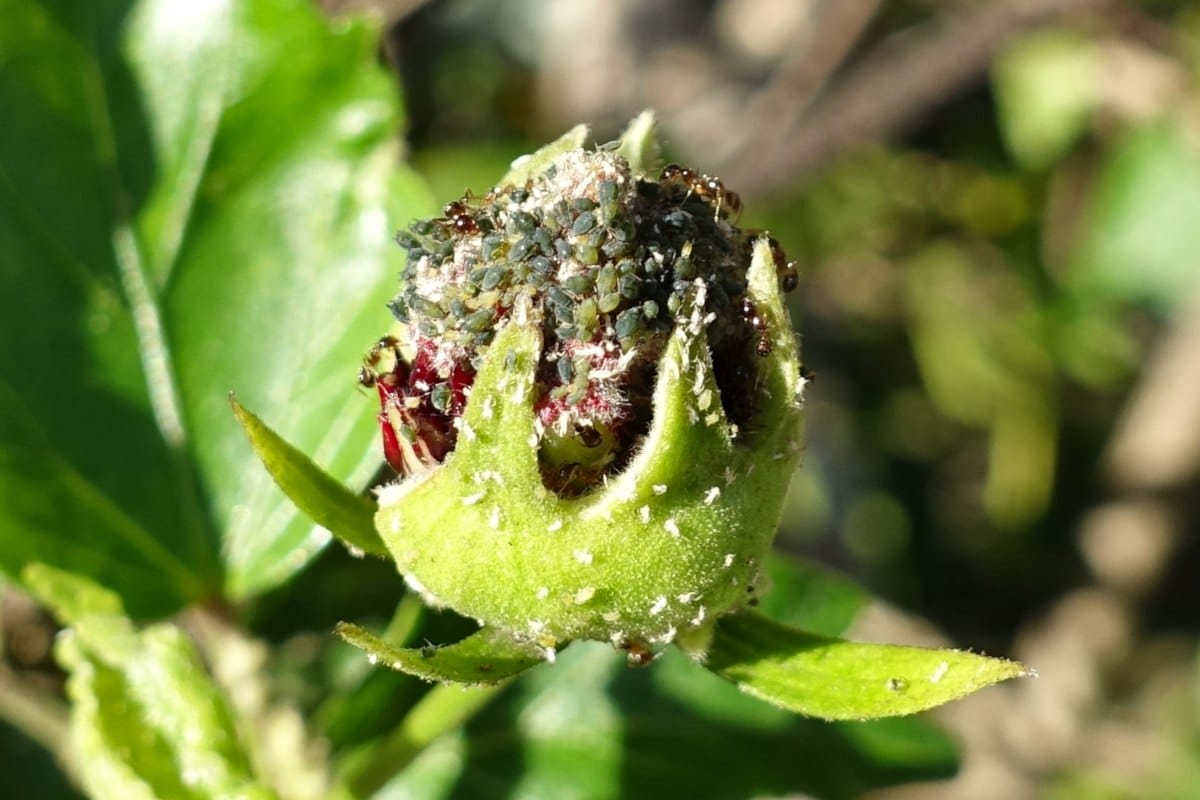Bugs on hibiscus plants pose a significant threat to the health and beauty of these popular garden plants. Understanding the common types of bugs that infest hibiscus plants, their impact on the plants, and effective management strategies is crucial for maintaining healthy and vibrant hibiscus plants.
Hibiscus plants are susceptible to a range of bugs, including aphids, mealybugs, scale insects, thrips, and whiteflies. These bugs can cause damage to the leaves, flowers, and stems of the plant, leading to stunted growth, reduced flowering, and even plant death. Prevention and control measures are essential to protect hibiscus plants from these pests.
Bugs on Hibiscus Plants

Hibiscus plants, with their vibrant blooms and lush foliage, are susceptible to infestations by a variety of insects. Identifying these pests accurately is crucial for implementing effective control measures. This article provides a comprehensive guide to the most common bugs that infest hibiscus plants, highlighting their distinct characteristics and providing visual aids for easy identification.
Aphids
Aphids are tiny, soft-bodied insects that often appear in large colonies on the undersides of leaves or along stems. They are typically green, but can also be black, brown, or yellow. Aphids feed on plant sap, causing leaves to curl and distort. Their honeydew excretions can also attract ants and promote the growth of sooty mold.
Mealybugs
Mealybugs are small, oval-shaped insects covered in a white, waxy substance. They attach themselves to stems and leaves, sucking sap and causing stunted growth and yellowing of foliage. Mealybugs can also transmit viruses to hibiscus plants.
Spider Mites
Spider mites are tiny, spider-like creatures that spin fine webs on the undersides of leaves. They feed on plant sap, causing leaves to turn yellow, brown, or bronze. Spider mites thrive in hot, dry conditions.
Thrips
Thrips are slender, elongated insects that can be black, brown, or yellow. They feed on flower buds and leaves, causing distorted growth and silvery streaks on the foliage. Thrips can also transmit viruses to hibiscus plants.
Whiteflies
Whiteflies are small, white insects that resemble tiny moths. They lay their eggs on the undersides of leaves, and the nymphs feed on plant sap. Whiteflies can cause leaves to turn yellow and drop prematurely.
Images for Visual Identification
- Aphids: Image of aphids on hibiscus leaves
- Mealybugs: Image of mealybugs on hibiscus stem
- Spider Mites: Image of spider mites on hibiscus leaf
- Thrips: Image of thrips on hibiscus flower bud
- Whiteflies: Image of whiteflies on hibiscus leaf
Impact of Bugs on Hibiscus Plants
.jpg)
Bugs can cause significant damage to hibiscus plants, affecting their overall health and aesthetic appeal. These pests feed on various plant parts, leading to leaf damage, flower damage, and stunted growth. Understanding the mechanisms of damage and implementing effective prevention measures is crucial for maintaining healthy and vibrant hibiscus plants.
Leaf Damage
Many bugs, such as aphids, whiteflies, and thrips, feed on the sap of hibiscus leaves. This feeding activity can cause discoloration, yellowing, and curling of the leaves. In severe infestations, leaves may become stunted or drop prematurely, reducing the plant’s photosynthetic capacity and overall vigor.
Flower Damage
Bugs can also damage hibiscus flowers, affecting their development and appearance. Budding flowers may be aborted or fail to open, while open flowers can be discolored, deformed, or have stunted petals. Thrips, in particular, are known to feed on flower buds and nectar, causing damage to the reproductive structures of the plant.
Stunted Growth
Severe bug infestations can lead to stunted growth in hibiscus plants. When bugs feed on the plant’s sap, they weaken the plant’s vascular system, hindering the transport of nutrients and water throughout the plant. This can result in reduced growth, yellowing of leaves, and an overall decline in plant health.
Prevention Measures
Preventing bug infestations on hibiscus plants involves implementing a combination of cultural practices, chemical treatments, and biological controls.
- Cultural Practices: Maintaining good garden hygiene by removing fallen leaves and debris, promoting air circulation, and avoiding overwatering can help reduce the risk of bug infestations.
- Chemical Treatments: Insecticides can be used to control bug populations. However, it’s important to choose products specifically labeled for use on hibiscus plants and follow the application instructions carefully.
- Biological Controls: Introducing beneficial insects, such as ladybugs and lacewings, can help control bug populations naturally. These insects prey on common hibiscus pests, providing an environmentally friendly method of pest management.
Management of Bugs on Hibiscus Plants

Managing bug infestations on hibiscus plants requires a multifaceted approach, encompassing both chemical treatments and biological control methods. The choice of treatment depends on the severity of the infestation, the specific type of bugs involved, and the gardener’s preferences for environmental friendliness.
Chemical Treatments, Bugs on hibiscus plant
Chemical treatments involve the application of insecticides or pesticides to kill or repel bugs. Insecticides target specific insects, while pesticides have a broader range of activity. When using chemical treatments, it is crucial to follow the instructions carefully, wear appropriate protective gear, and avoid applying during windy conditions to prevent drift.
- Insecticides: Contact insecticides, such as insecticidal soap or horticultural oil, kill bugs on contact. Systemic insecticides are absorbed by the plant and distributed throughout its tissues, providing long-lasting protection.
- Pesticides: Broad-spectrum pesticides, such as carbaryl or malathion, kill a wide range of insects. However, they can also harm beneficial insects, so their use should be limited to severe infestations.
Biological Control
Biological control involves the introduction of natural enemies, such as ladybugs or parasitic wasps, to prey on or parasitize bugs. This method is more environmentally friendly than chemical treatments and can provide long-term pest management.
- Ladybugs: Ladybugs feed on aphids, mealybugs, and other soft-bodied insects. They can be released directly onto hibiscus plants or attracted by planting flowers that produce nectar and pollen.
- Parasitic Wasps: Parasitic wasps lay their eggs inside the bodies of bugs, where their larvae hatch and feed on the host. They are effective against caterpillars, aphids, and other pests.
